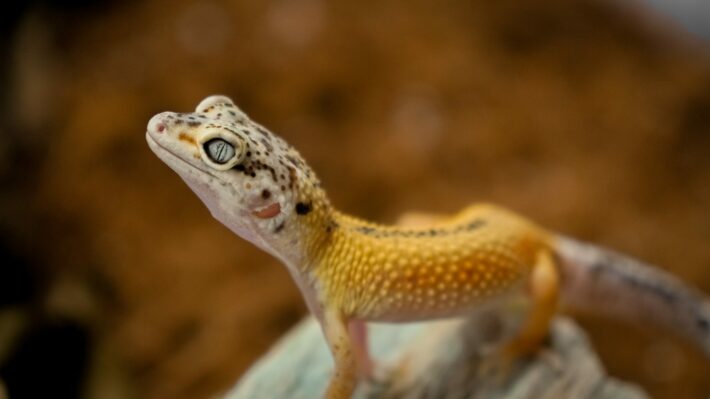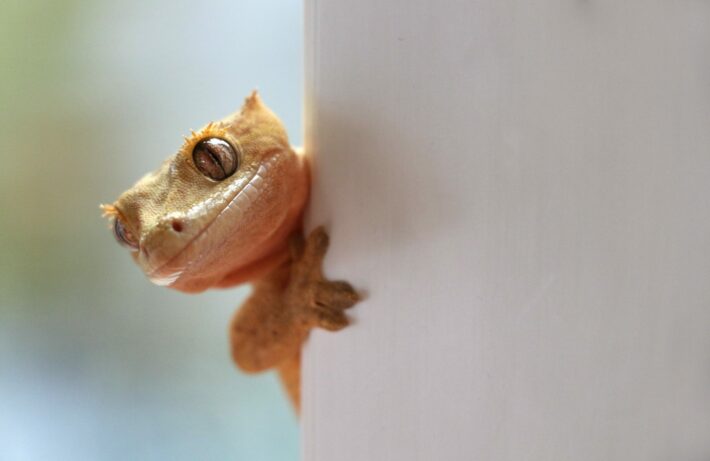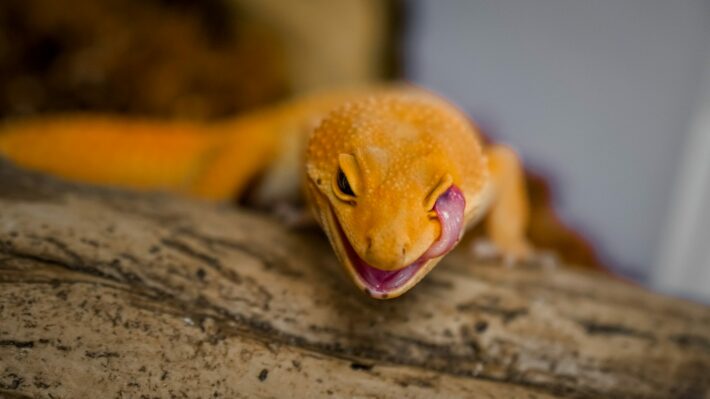When it comes to reptiles, one creature stands out for its sociable nature and amiable demeanor: the friendly lizard. These remarkable reptiles have captured the hearts of reptile enthusiasts and pet owners alike, thanks to their affable behavior and fascinating characteristics. From their gentle demeanor to their interactive nature, friendly lizards have become popular companions in the world of reptile enthusiasts.
In this article, we delve into the world of friendly lizards, exploring their captivating traits, popular species, and the joys of having them as pets. Get ready to embark on a journey into the realm of the friendliest lizards and discover why they are such beloved creatures in the reptile kingdom.
https://www.youtube.com/watchv=1VO6vmEWsxI&pp=ygUfV2hhdCBpcyB0aGUgZnJpZW5kbGllc3QgbGl6YXJkPw%3D%3D
Which lizard species tops the list as the friendliest reptile?
When it comes to friendly lizards, the Bearded Dragon is often considered the top choice. With their docile nature, Bearded Dragons are known for their friendly demeanor and ease of handling. They make excellent pets and are known to bond with their owners. Additionally, Leopard Geckos also rank high in the friendliness category.
Their calm temperament and relatively low maintenance make them popular choices for reptile enthusiasts seeking a friendly lizard companion. Whether you choose a Bearded Dragon or a Leopard Gecko, both species have proven to be excellent options for those looking for a friendly reptilian companion.
What are the distinctive characteristics of a friendly lizard?
Friendly lizards typically display certain distinctive characteristics. These may include a docile temperament, a willingness to interact with humans, and a lack of aggression. They are often comfortable being handled and may even seek out human interaction. Friendly lizards tend to be curious and show interest in their surroundings.
They may exhibit behaviors such as gentle tongue flicking, relaxed body posture, and a lack of defensive displays. It’s important to note that while individual lizards may vary, these characteristics are often associated with friendlier species and can help identify a lizard’s amiable nature.
Are there any specific lizard breeds known for their sociability?
Yes, certain lizard breeds are renowned for their sociability. The Blue Tongue Skink is one such species. With their calm disposition and tendency to form strong bonds with their owners, Blue Tongue Skinks are known for their friendliness. Another sociable lizard breed is the Tegu.
These intelligent reptiles have the capacity to recognize their owners, display affectionate behavior, and even enjoy cuddling. Both the Blue Tongue Skink and Tegu exemplify lizard breeds that consistently demonstrate a high level of sociability, making them popular choices for reptile enthusiasts seeking a friendly lizard companion.
How can you identify a friendly lizard among different reptile species?
Identifying a friendly lizard among different reptile species can be done by observing specific behaviors and body language. Look for lizards that display a calm demeanor, show curiosity, and willingly approach humans without signs of aggression or fear.
Friendly lizards often exhibit relaxed body postures, open and alert eyes, and a lack of defensive displays, such as puffing up or tail lashing. Additionally, seeking advice from experienced reptile owners, researching species known for their friendliness, and interacting with lizards before making a choice can also help in identifying a friendly lizard that suits your preferences.
What factors contribute to a lizard’s friendly behavior?
Several factors can contribute to a lizard’s friendly behavior. Genetics plays a role, as certain lizard species are naturally more sociable than others. Early socialization and positive experiences during a lizard’s development stage can also shape its behavior toward friendliness.
Adequate handling, regular human interaction, and a calm environment can foster trust and encourage friendlier behavior in lizards. Additionally, providing a proper diet, suitable habitat, and meeting their physical and mental needs can contribute to their overall well-being and sociability. It’s important to create a positive and nurturing environment for a lizard to thrive and exhibit friendly behavior.
Can you train a lizard to become friendlier?
While lizards may not be as trainable as some other pets, you can still influence their behavior to some extent. Regular, gentle handling and positive reinforcement can help build trust and encourage friendliness. Offering treats as rewards for calm and friendly behavior can also reinforce positive associations.
However, it’s important to respect a lizard’s natural instincts and boundaries, as not all lizards may be comfortable with extensive handling or training. Each lizard is unique, and while training can have some impact, their innate temperament and individual personality traits play a significant role in their friendliness.
What are the best lizard breeds for first-time reptile owners seeking a friendly pet?
For first-time reptile owners seeking a friendly pet, the Leopard Gecko and the Crested Gecko are often recommended choices. Leopard Geckos are known for their docile nature, low maintenance requirements, and ease of handling.
They are relatively small in size and can adapt well to captivity. Crested Geckos, on the other hand, are also popular due to their friendly temperament and low-maintenance needs. Their unique appearance and ability to climb make them fascinating pets. Both of these lizard breeds offer a good balance of friendliness, ease of care, and suitability for first-time reptile owners.
Do friendly lizards require special care or accommodations?
While friendly lizards may not require special care or accommodations solely based on their friendliness, all lizards have specific care needs. Providing a suitable habitat with the right temperature, lighting, and humidity levels is crucial for their overall well-being. A nutritious diet, regular veterinary check-ups, and appropriate substrate or bedding are essential as well.
Additionally, providing enriching environments with hiding spots, climbing structures, and opportunities for mental stimulation can contribute to a lizard’s overall happiness and friendliness. It’s important to research and meet the specific care requirements of the lizard species you choose, regardless of their friendliness.
Are there any specific environmental conditions that enhance a lizard’s friendliness?
While environmental conditions may not directly enhance a lizard’s friendliness, providing optimal conditions can contribute to their overall well-being and contentment. Maintaining stable temperature and humidity levels within their habitat is crucial.
Lizards that experience stress due to inadequate environmental conditions may become less friendly or exhibit defensive behaviors. A comfortable and enriching environment with appropriate lighting, hiding spots, and ample space to explore can help promote a lizard’s overall health and confidence, and, in turn, potentially enhance its friendly demeanor.
This table provides valuable information about specific environmental conditions that can enhance a lizard’s friendliness.
| Environmental Conditions | Effects on Lizard Friendliness | Recommendations |
|---|---|---|
| Optimal Temperature | Comfortable temperature promotes lizard’s well-being, reduces stress, and encourages friendly behavior. | Provide a temperature gradient within the habitat, with a warm basking spot and cooler areas to allow the lizard to regulate body temperature. |
| Suitable Humidity Levels | Appropriate humidity helps maintain proper hydration, skin health, and overall comfort for the lizard. | Research the specific humidity requirements of the lizard species and ensure the habitat provides the recommended humidity range. |
| Lighting and UVB Exposure | Proper lighting, including UVB exposure, aids in the lizard’s overall health, bone development, and physiological processes. | Use high-quality reptile-specific lighting fixtures, providing both UVA and UVB rays, and follow recommended lighting schedules. |
| Enriching Habitat | An enriching habitat with hiding spots, climbing structures, and varied substrate encourages natural behaviors and reduces stress. | Include rocks, branches, and foliage to create a stimulating and diverse environment that allows the lizard to explore and feel secure. |
| Quiet and Calm Environment | Avoiding excessive noise, sudden movements, and disturbances helps create a peaceful setting for the lizard. | Place the lizard’s enclosure in a quiet area, away from high-traffic zones or loud household activities. |
What are the telltale signs of a lizard’s friendly temperament?
Several telltale signs can indicate a lizard’s friendly temperament. These may include a calm and relaxed body posture, a lack of defensive displays (such as tail lashing or hissing), and a willingness to approach humans without signs of aggression or fear. Friendly lizards often show curiosity, explore their surroundings, and may even seek out interaction with their owners.
Additionally, a lizard that allows gentle handling without attempting to bite or escape can be considered friendly. However, it’s important to remember that individual lizards can vary in their behavior, and these signs should be interpreted in conjunction with other factors.
Are there any particular interactions or behaviors that indicate a lizard’s friendliness?
Yes, there are specific interactions and behaviors that can indicate a lizard’s friendliness. Lizards that willingly approach their owners, particularly when offered food or during interactive play sessions, often demonstrate their amiable nature. They may show a level of trust by allowing handling without exhibiting signs of stress or aggression.
Friendly lizards might also display behaviors such as gentle tongue flicking, relaxed basking, or a willingness to be hand-fed. These positive interactions and behaviors can indicate a lizard’s friendliness and their comfort level with human presence and interaction.
Do friendly lizards interact well with other pets or humans?
Friendly lizards can generally interact well with other pets or humans when introduced properly and under supervised conditions. However, it’s important to consider the specific species and individual temperament of the lizard and the behavior and compatibility of the other pets involved.
Some lizards may not appreciate the presence of other animals, while others may be more social and tolerant. Similarly, while friendly lizards usually enjoy human interaction, it’s crucial to handle them gently and respect their boundaries. Always ensure the safety and well-being of all animals involved during interactions.
Are there any precautions to consider when handling a friendly lizard?
When handling a friendly lizard, several precautions should be taken to ensure their safety and well-being. First, it’s important to wash hands thoroughly before and after handling to avoid transmitting any potential pathogens. Gentle and proper handling techniques should be employed to minimize stress and the risk of injury.
It’s essential to support the lizard’s body properly, avoiding excessive pressure on delicate areas. Additionally, never force a lizard to be handled if they show signs of discomfort or stress. Respecting their boundaries and observing their body language is crucial during handling interactions.
Which friendly lizard species are suitable for families with children?
Leopard Geckos and Bearded Dragons are popular friendly lizard species suitable for families with children. Leopard Geckos are relatively small, low-maintenance, and typically docile, making them a great choice for young children.
Bearded Dragons are larger but known for their friendly and sociable nature. They can tolerate handling well and often enjoy interactive play with children. However, parental supervision is always necessary during interactions between children and lizards to ensure the safety of both parties and the welfare of the lizard.
What are some unique anecdotes or stories of friendly lizard behavior?
Friendly lizards have been known to display heartwarming behaviors that captivate their owners. Some anecdotes include lizards seeking out their owners for attention or cuddles, recognizing their owners’ voices and approaching them, or even displaying signs of happiness when being handled or interacted with.
Owners often share stories of lizards showing affection, such as nuzzling against their hands or resting on their shoulders. While each lizard’s behavior is unique, these anecdotes highlight the strong bonds that can form between humans and their friendly lizard companions, making them truly special pets.
In summary
Understanding the world of friendly lizards has provided us with fascinating insights into these captivating reptiles. From the sociable Bearded Dragons to the docile Leopard Geckos, specific lizard species have emerged as the top choices for those seeking a friendly pet.
We have explored the distinctive characteristics that define a lizard’s friendliness, the factors that contribute to their amiable behavior, and the precautions to consider when handling them.
Additionally, we have discussed the importance of providing suitable environmental conditions and how they can enhance a lizard’s friendliness. By incorporating this knowledge, reptile enthusiasts can create a nurturing and enriching environment that fosters strong bonds and meaningful interactions with their friendly lizard companions.







